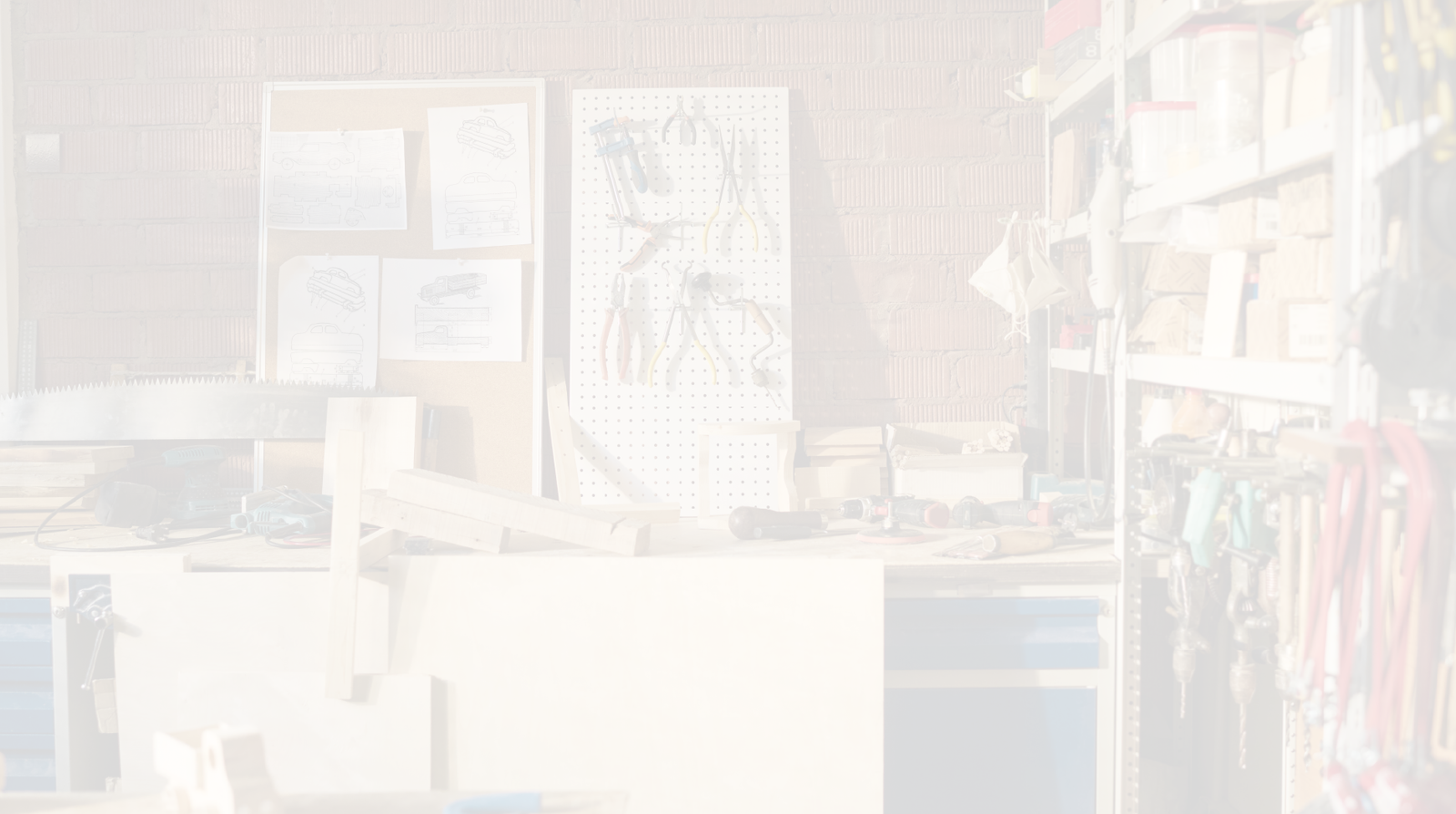You’re probably wondering: “It’s just hooks and nails! What else do you need to do after drilling them in?”
The answer? A lot.
It can be intimidating, and that’s why we’re here – to discuss all things picture mounting, especially the hardware. If you’ve noticed surface problems on your D-rings or wall hooks, this is the article for you.

To maintain your gallery wall and keep your pictures securely hung for a long time, it’s essential to know how to clean and maintain the hardware. In this ultimate guide, we will provide regular maintenance practices and preventive measures for the long term. Let’s dive in!
Understanding Picture Hanging Hardware
Before we tell you our tips and tricks, let’s talk about what your picture and mirror-hanging hardware are made of. This will help when you’re looking for solutions to clean them with, and you certainly don’t want to use the wrong one that can cause the product to quickly deteriorate!
It all comes down to one thing: the material. Depending on the specific component and intended use, picture frame hangers can be made from various materials. Most, if not all, of the products at Picture Hang Solutions are made from two kinds of materials:

Regular Maintenance Practices
You’ll be relieved that 90% of the battle is won with regular checking and cleaning. After all, merely getting the photos up on the wall is not the end-all-be-all of picture hanging – it’s a commitment, and staying on top of the upkeep is the only way to ensure the longevity and safety of your prints and pictures.
Dust and clean.

Your frame hangers need regular dusting and cleaning to maintain functionality and appeal. Accumulated dirt and debris can affect the hardware’s durability and performance.
Unless your hardware is made of plastic, where water and clean cloth should be enough, here are a few tips and tricks for cleaning metal hardware.
1. Take the picture frame off the wall hook first for thorough cleaning.
2. Use a soft microfiber cloth or small brush, a mild soap or cleaning solution, and a clean cotton cloth.
3. Ensure the cleaning solution you use is specifically made for the material.
In case you’re not sure about the selection of home cleaning products, here’s what to avoid:
- Chloride cleaners
- Chloride bleachers
- Abrasive cleaners
- All-purpose cleaners
- Strong alkaline cleaners
If you’re planning to make your solution, here are some substances that are safe to use for metal hangers and hooks:
- White vinegar
- Baking soda (This one’s a mild alkaline so it should be okay!)
- Dish soap
- All-purpose flour
- Lemon juice
- Toothpaste
4. Scrub away the accumulated dirt or grime with the microfiber cloth or brush.
5. Cleanse the surface using a mild soap or homemade solution. Rinse the wire with clean water to remove any residue.
6. Use a separate clean cotton cloth to wipe away any solution residue. Let it air dry first before rehanging the frame.
Inspect for wear and tear.
If you see your framed pieces constantly tilting to the side, it’s time to remove the picture frame from the wall hook and thoroughly inspect the individual hardware parts in a well-lit area.
For picture hanging wires:

1. First, ensure the picture wires are still securely attached to the fasteners. Then tug on it a couple of times to check the tension. It should feel taut without excessive give.
2. Check the wire for signs of fraying, breaking, kins, or unraveling. If you notice any of these issues, we advise replacing the wire.
For hooks and hangers:

1. Inspect the hardware for signs of corrosion, warping, bending, or breakage. Any sign of deformity means it’s weakened, so it must be promptly replaced.
2. Look at the attachment points or accompanying screws. Use a screwdriver or any appropriate tool to tighten any loose screws. Go over the other ones for good measure. For missing screws, recall the exact model and weight rating of the hanger you used and check with the store if the right screws are in stock.
3. If the adjustable hinges or swiveling parts are squeaky or hard to move around, lubricate them with a small amount of silicone-based lubricant.
For cleats:

1. Pitting, dents, scratches, and cracks make the cleats look unsightly and signal excessive wear.
2. If, along with the surface damages listed above, the cleats are unstable or wobbly, look at the attaching screws first, if any are loose. If the screws seem fine, but the frame is still not sitting correctly, it’s time to replace the cleats.
Preventive Measures for Long-Term Durability
Right off the bat, when planning out picture or mirror mounting for your wall display, you should be thinking about its longevity. This will make regular maintenance more manageable and less stressful. It all comes down to helping your materials last longer and choosing the right environment.
Strengthen the material’s resistance against corrosion.

Being a smart consumer means doing the appropriate research beforehand and contextualizing the products you find with your situation. For example, if you live in a high-humidity area, you will want materials that can withstand different atmospheric conditions. It helps to prepare ahead of eventual rust or corrosion.
Once you have your picture hanging hardware, here are some things you can do to fortify its resistance to corrosion.
1. Apply a protective coating or sealant to the hardware. You can use the following products that can also prevent tarnishing:
- Clear lacquer or varnish
- Rust inhibitor or metal protector
- Wax (for brass)
2. Avoid exposing the picture frames and the hardware to excessive moisture or humidity. Keep the pictures away from direct sunlight and areas prone to water and condensation. Examples of these areas include bathrooms, basements, and exterior areas (unless you’ve read our article on how to hang artwork outdoors!)
Avoid excessive stress on the hardware.

Another thing you should consider when buying hardware is the weight capacity of the product. Most picture hanging hardware comes with weight capacities. This means the maximum weight that a hanger or wall hook can support. Some are specialized hangers for heavy pictures, while others are designed to hold lightweight frames.
It’s good practice to know the frame weight first to narrow down the products to look for. Buying the wrong product can result in catastrophic consequences. When a lightweight hanger is used for a heavy frame, excessive stress is placed on the hardware, leading to warping and breaking. You certainly don’t want to worry about the frame dropping to the floor whenever you walk by the display.
To prevent these situations, here’s how to go about it:
1. As a rule of thumb, choose a picture hanger that can support 1-3 times the frame's weight. When in doubt, get the hook with the higher weight rating.
2. Reinforce the frame with additional hardware to help distribute the weight and reduce stress on individual components.
Our Wall Buddies brace and strengthen the upper corners of wood and metal frames, while our Lead Anchors provide additional mounting points at the bottom corners of the frame.
RELATED: Why Weight Ratings are Essential in Picture Hanging
Minimize movement.

When looking for the proper environment to hang artwork in, another thing to pay attention to aside from exposure to water and sunlight is whether these areas are busy communal hubs that get a lot of activity. The best course of action is to hang them in areas that don’t get much movement because being constantly jostled around can cause abrasions on the hardware surface and the screws to loosen. They can also chip your wall paint.
If you still need to put the artwork in a busy area, below are three products we recommend you look into:
1. Use bumpers or felt pads between the frame to minimize movement and protect the wall surface.
2. To prevent unauthorized movement or theft, consider using picture frame locking hardware or anti-theft devices like our security kits if your artworks are placed in public or high-traffic areas.
3. Consider kid-safe picture hanging hardware for earthquake-prone areas and busy areas. Our Brass Tremor Hooks have a wire-snapping feature that keeps the hanging wire from sliding off.
RELATED: How to Keep Art Safe from Theft, Transport Damage, and Earthquakes
Final Thoughts
Knowing how to maintain picture-hanging hardware is crucial for preserving the integrity of your artwork. After all, they literally hold the entire display together! If you have any concerns or see any problems with your hardware, send us an email, and we’ll do our best to help!












Leave a comment (all fields required)